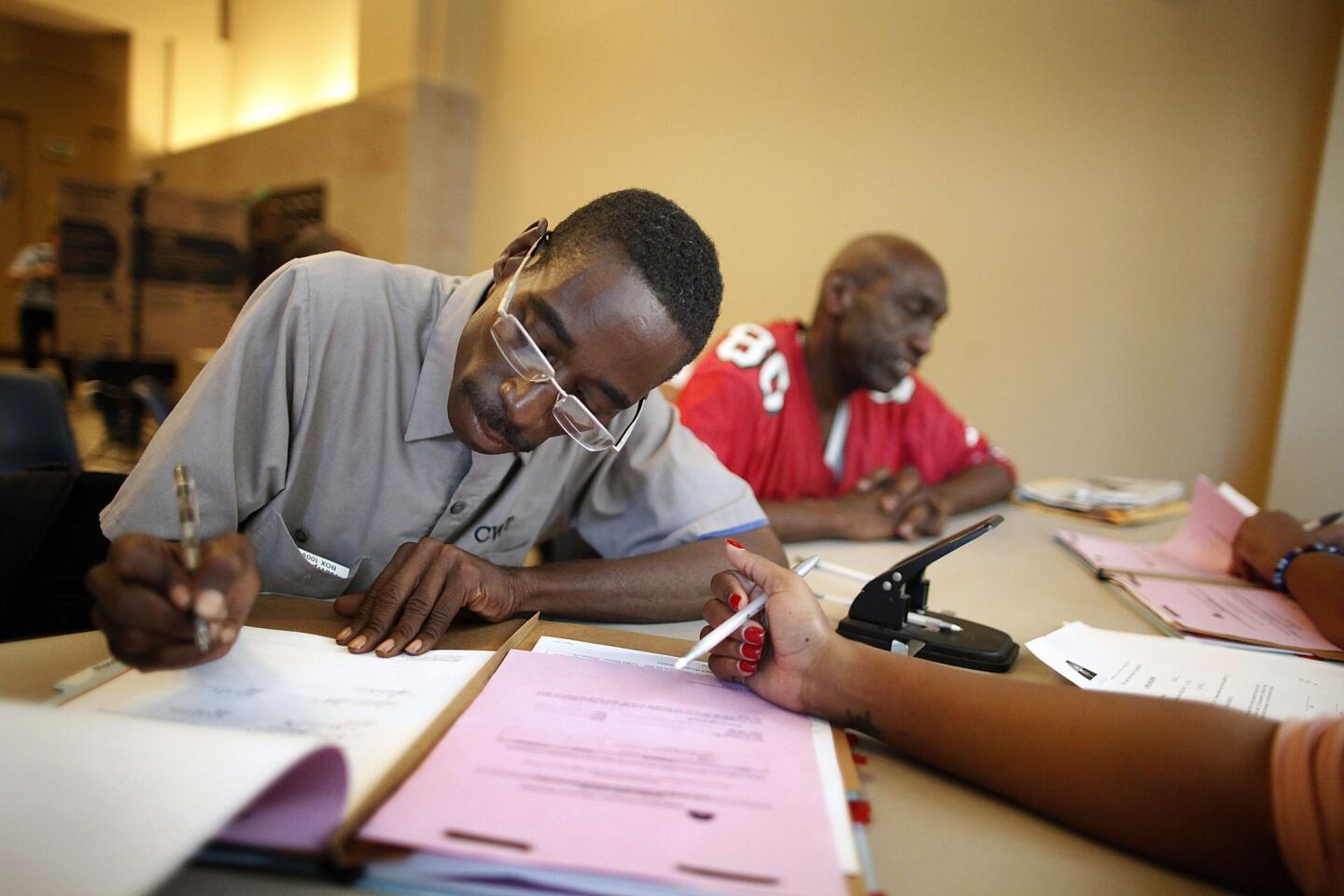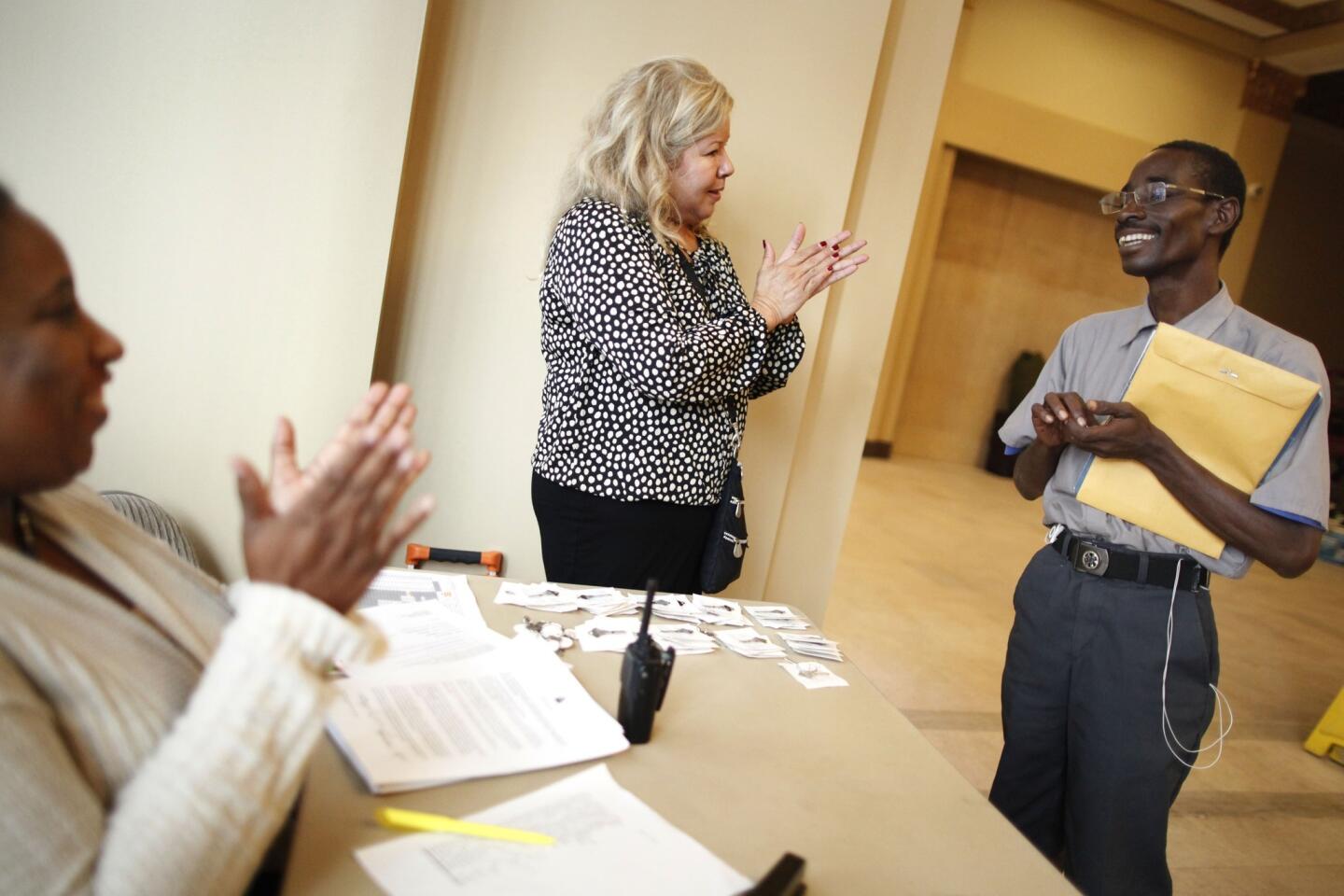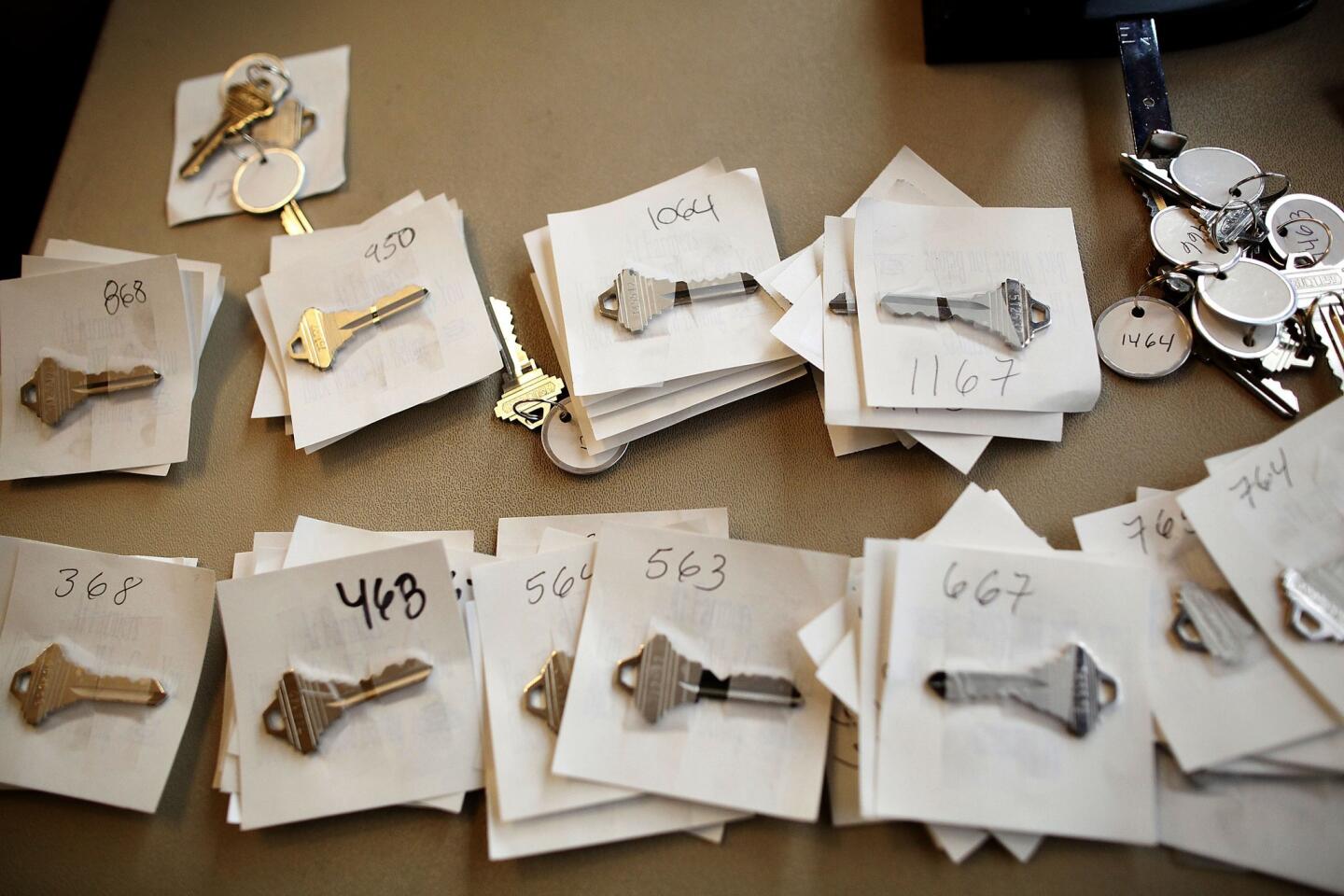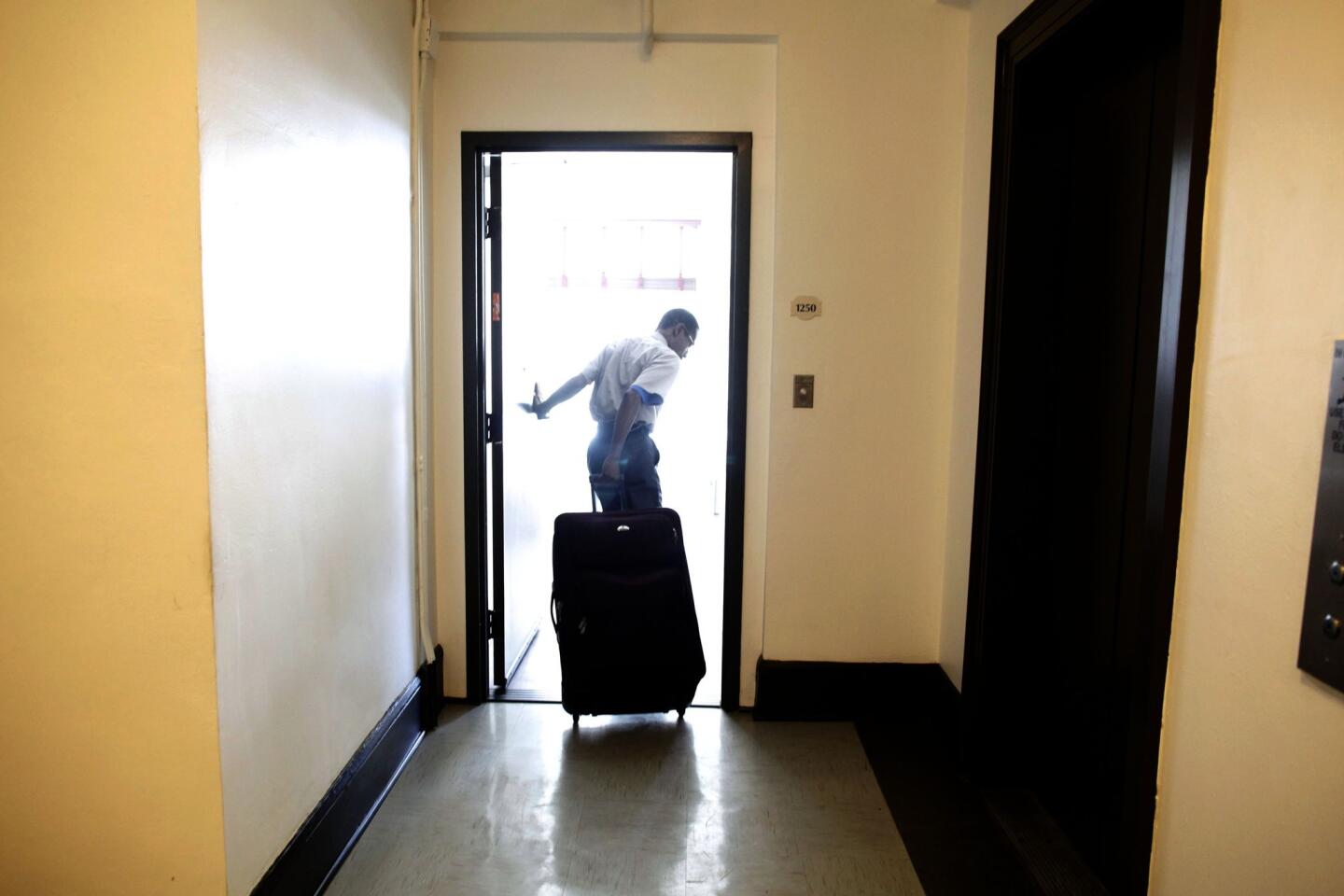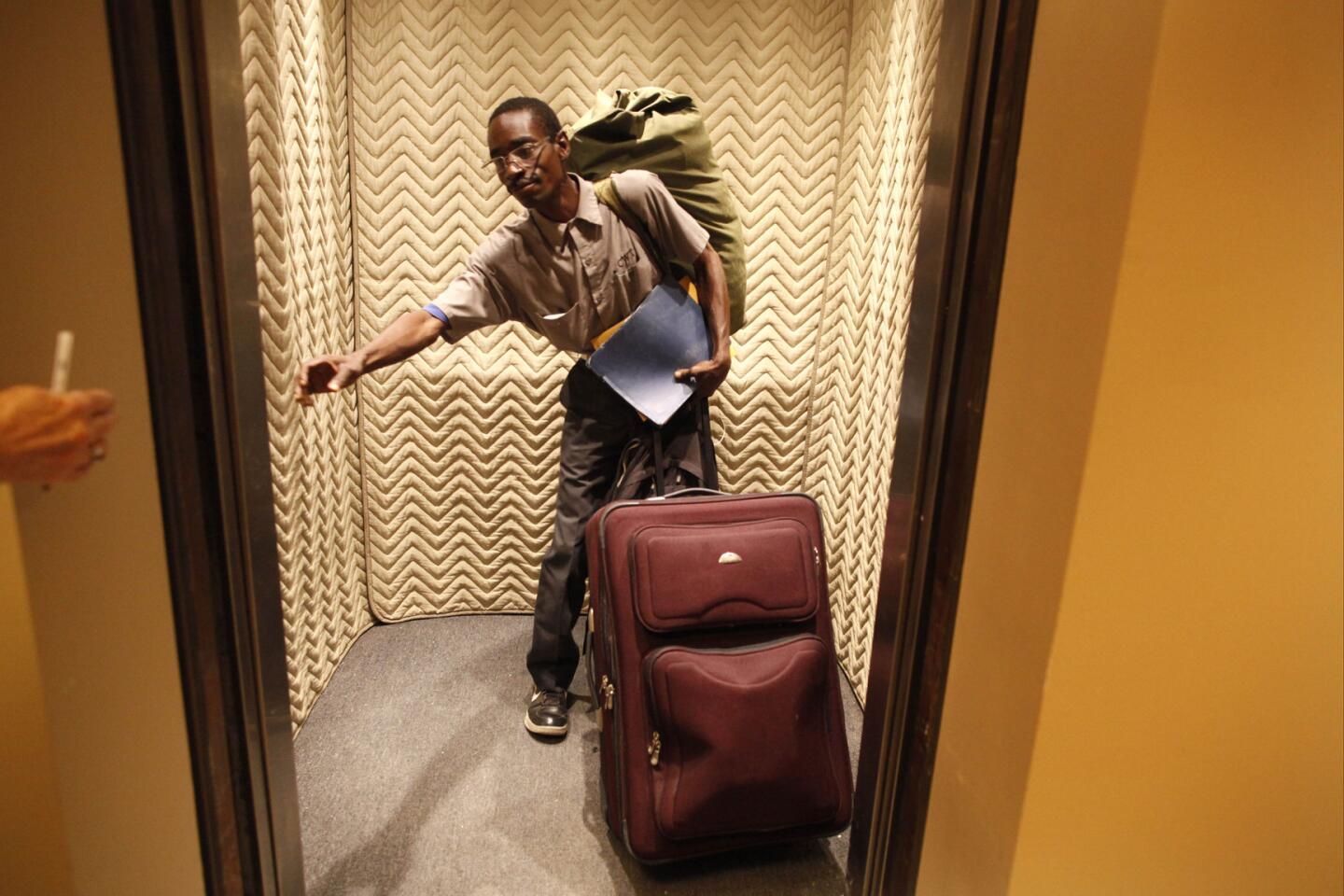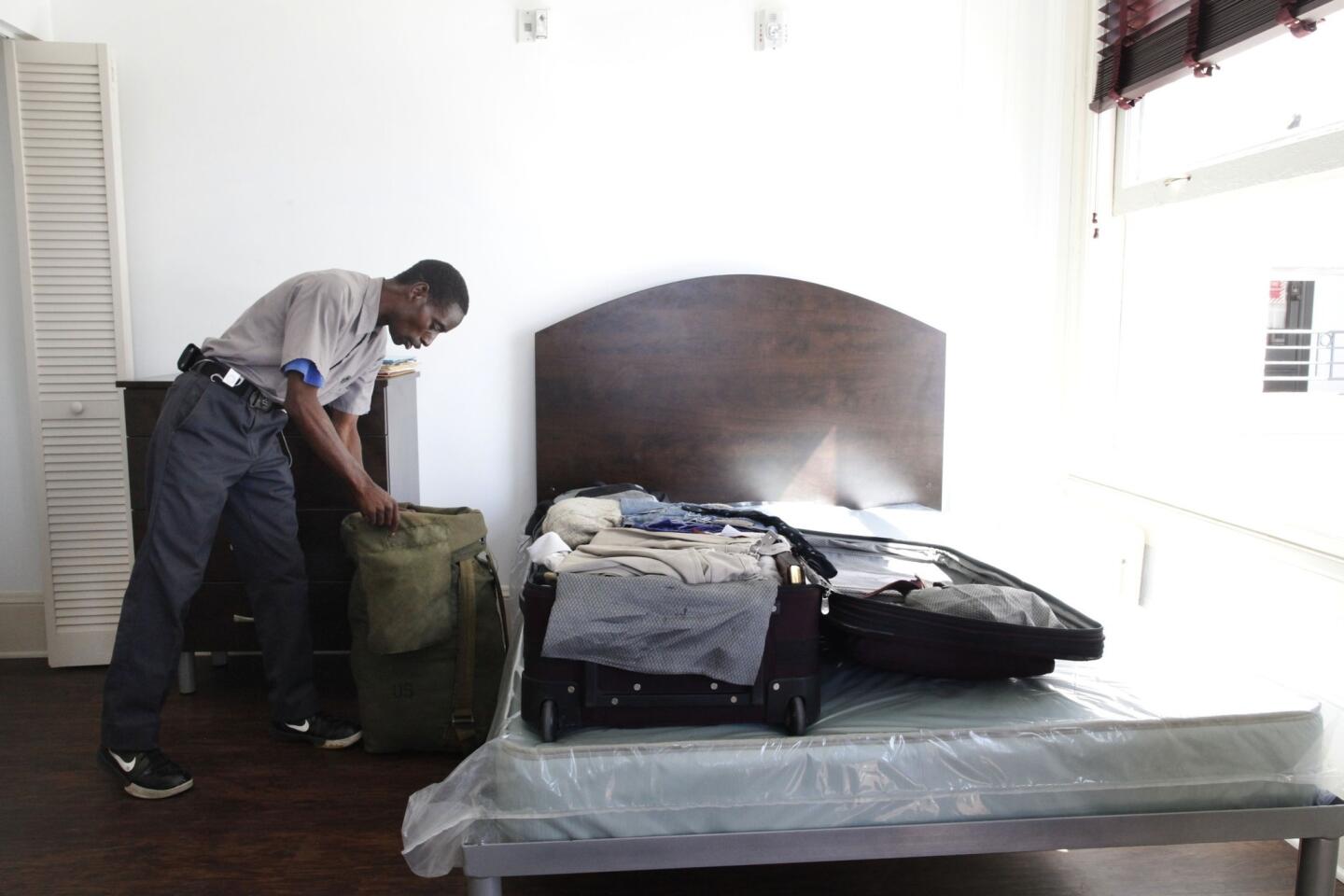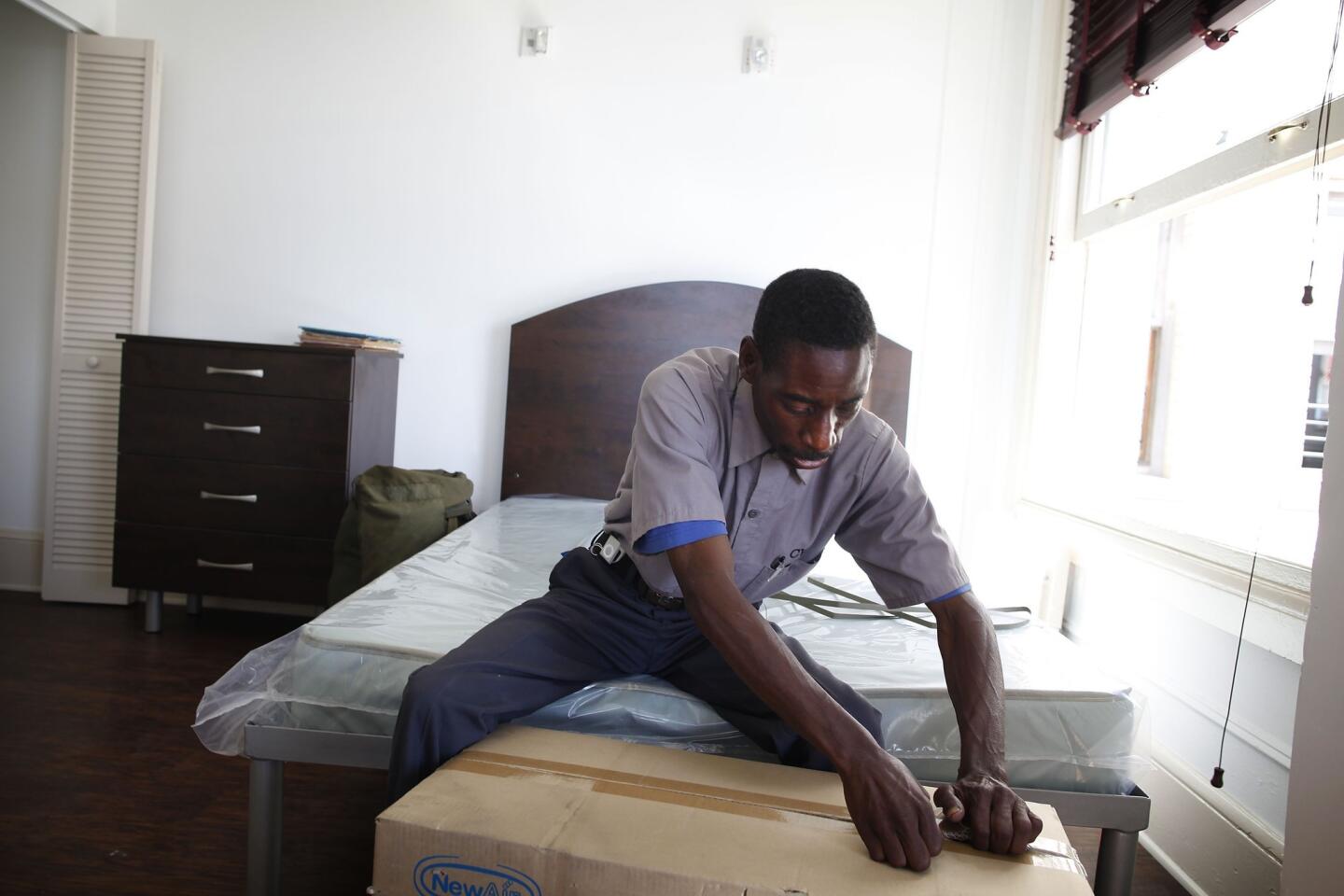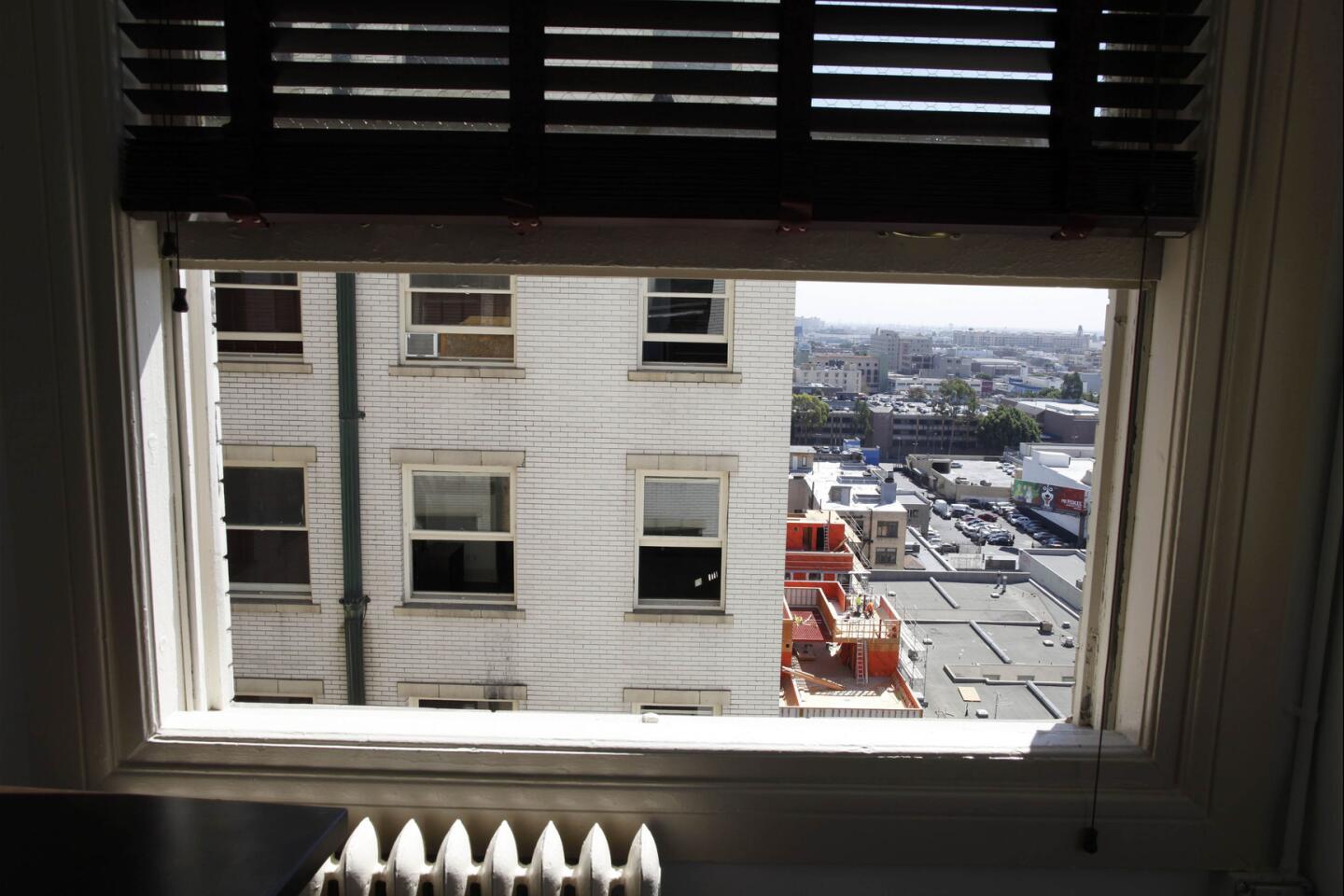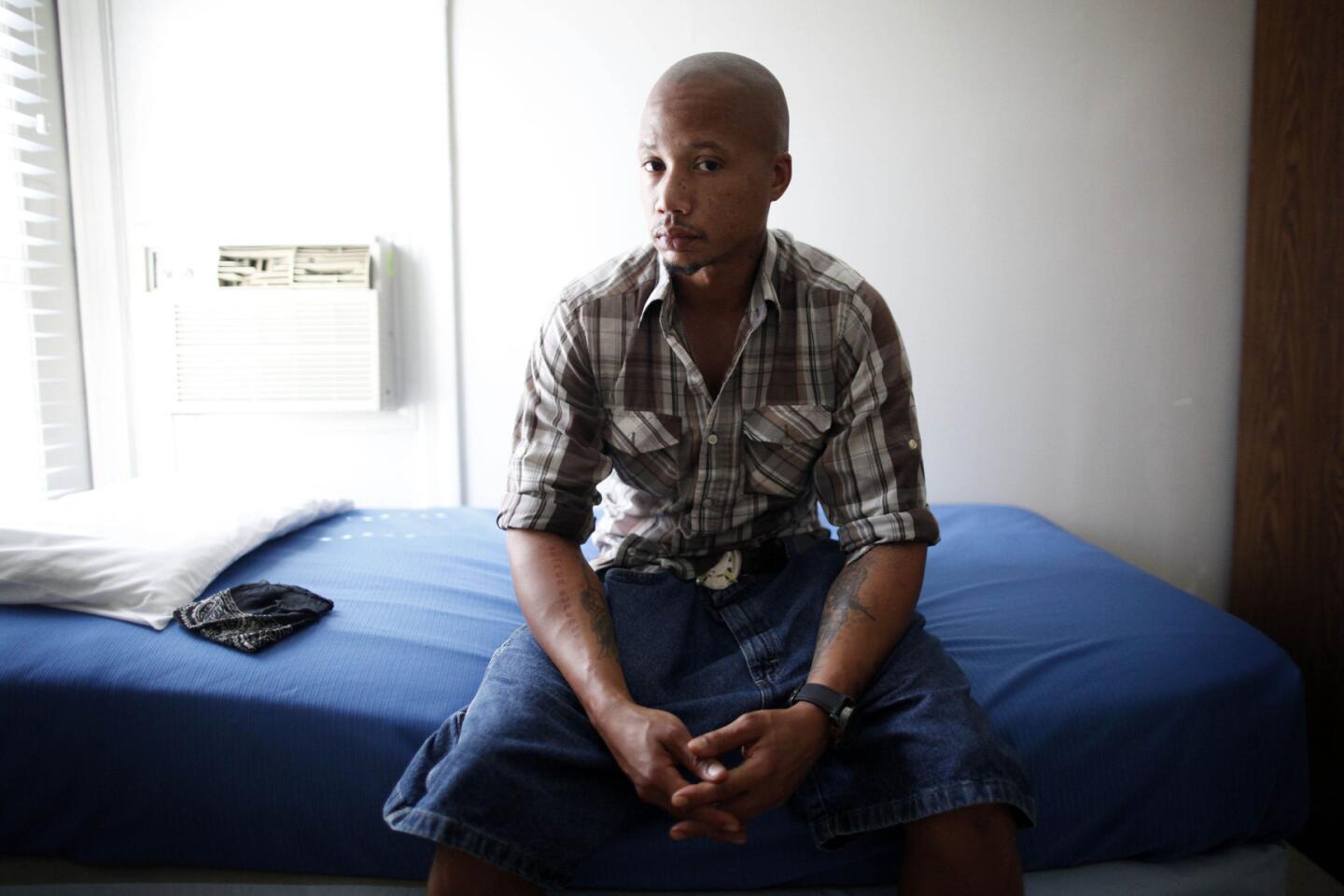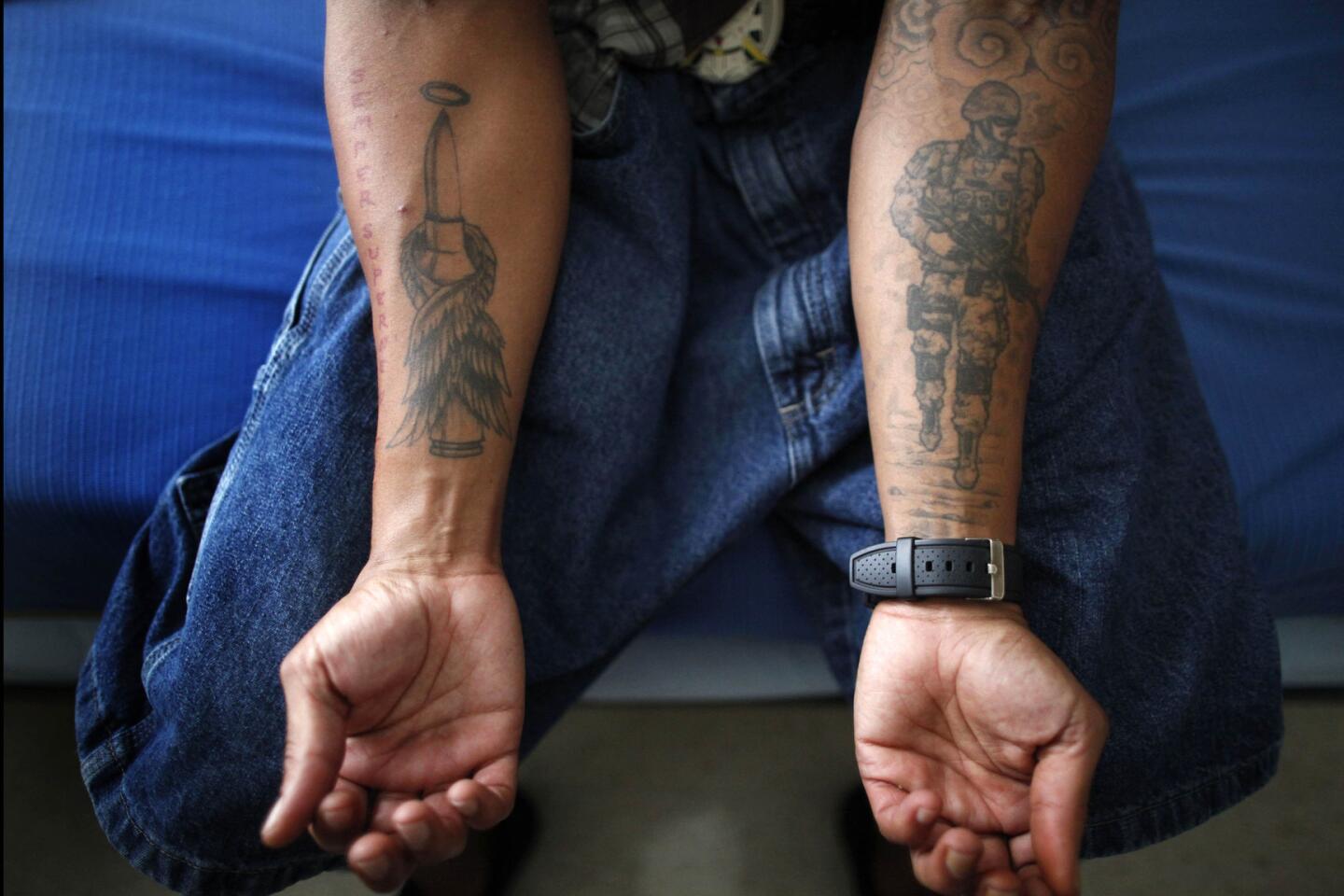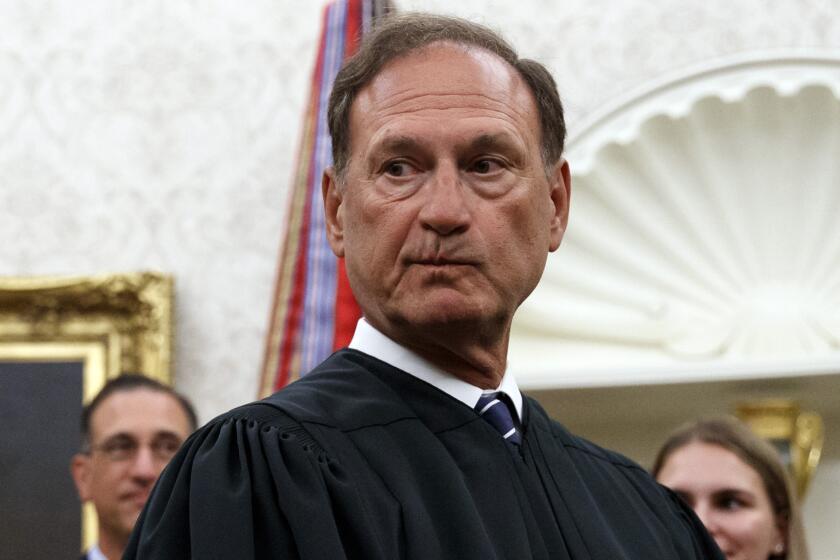Restored Rosslyn Hotel annex will house 75 homeless veterans
- Share via
Anthony Smith slept near the baseball diamond at a West Los Angeles park Sunday night, huddled with the olive drab duffel pack he has carried since his four-year stint as an Army medic during the Gulf War.
“I saw a lot of blood and despair,” said Smith, 49.
By noon Monday, he had taken up residence in an immaculately restored, cream-and-ivory studio apartment in the grand old Rosslyn Hotel annex in downtown Los Angeles. Smith is one of 75 former service members who are moving into the $32-million SRO Housing Corp. project as part of the Obama administration’s drive to end veteran homelessness by the end of 2015.
The effort faces significant hurdles in California, which has 15,000 homeless veterans — including 6,000 in Los Angeles County, the most in the nation, according to federal data.
The U.S. departments of Veterans Affairs and Housing and Urban Development have poured resources into improving those statistics. In May 2013, California received $16 million for subsidized rents connected to medical care and services.
Local clinical staff to provide the services has grown from 100 to 400, said Michelle Wildy, chief of community care for the VA Greater Los Angeles Healthcare System. And the agency is no longer relying on veterans coming in for treatment, she said, but instead is going out to the riverbeds, freeway underpasses and alleys to find them.
Aaron Clark, a Los Angeles native, said he thought he had “hit the ground running” when he left the infantry in 2009, with a construction job and a girlfriend in San Pedro. He had been diagnosed with post-traumatic stress disorder stemming from combat experiences, including losing friends on the battlefield.
“One thing they warned us all of in post-traumatic stress class was we were going to start feeling better, then forget the tools we were taught and fall through the cracks,” said Clark, 32. “That’s what happened to me.”
Amid trouble with his girlfriend and the absence of structure and discipline, Clark found himself turning to booze, he said.
“I could wake up in the morning and drink a half-pint before I got out of bed,” he said. “I missed the sense of having a purpose. A lot of other vets feel the same way.”
Clark used his GI Bill benefits to enter film school but arrived drunk most days. He said he repeatedly slipped up in VA sobriety programs and ended up sleeping outside the derelict buildings at the Veterans Affairs West Los Angeles campus.
The Rosslyn Hotel is run on a housing-first model, meaning residents don’t have to be sober to live there. Still, after years in the street, homeless people don’t always take well to housing, particularly having to pay typically 30% of their income in rent — a significant bite out of their $221-a-month welfare checks, or Social Security disability payments.
“Many times they sleep on the floor for months because they’re not accustomed to sleeping on a bed,” said Anita Nelson, chief executive of SRO Housing. “One resident periodically goes back under the freeway a couple of nights.”
Wildy, however, said her agency has housed 4,050 veterans and their families since 2009. Veteran homelessness in the county dropped 38% from 2011 to 2013, well ahead of the average national decrease of 24%, she said.
“I feel we are on track,” Wildy said.
United Way’s Home for Good initiative, a coalition of public and private agencies, said 9,600 homeless veterans have been housed in L.A. County since 2011. Home for Good spokesman David Hamlin said federal aid to Los Angeles increased because of a “growing confidence” in the region’s ability to coordinate city and county homelessness efforts. Home for Good was instrumental in encouraging the cooperation, he said.
In addition to homeless veterans, the 264-unit building will house a mix of non-veteran homeless, low-income and market-rate tenants.
Smith said he is “humbled” by his new digs. The efficiency at 5th and Main streets, part of a 1923 Beaux Arts gem that was once the West Coast’s largest hotel, has octagonal tile on the bathroom floor, crown molding, an old-fashioned nickel and glass light fixture and a 12th-floor view of a lively section of downtown.
“It’s exactly what I need to rehabilitate,” said Smith, who suffers depression and anxiety but is starting a housekeeping job in November.
Said Clark, who plans to go back to art school and will move into his studio in the next few weeks: “It’s great for getting back on my feet.”
Twitter: @geholland
Sign up for Essential California
The most important California stories and recommendations in your inbox every morning.
You may occasionally receive promotional content from the Los Angeles Times.
